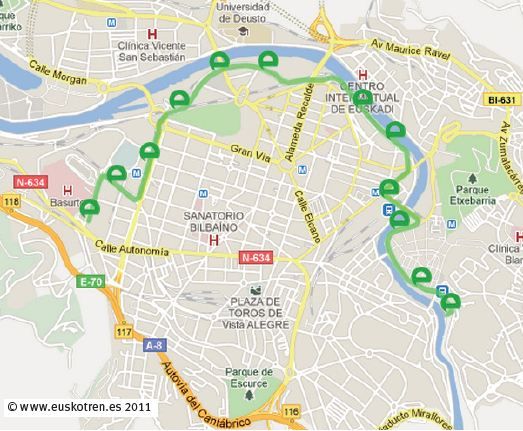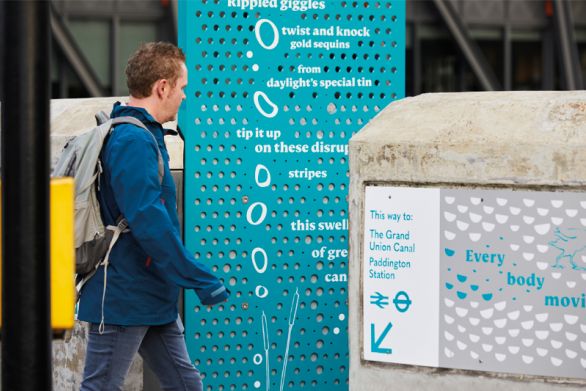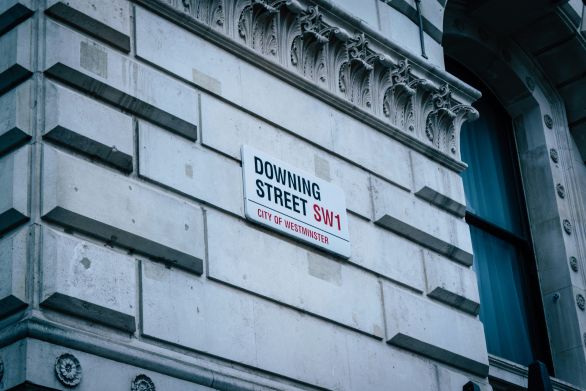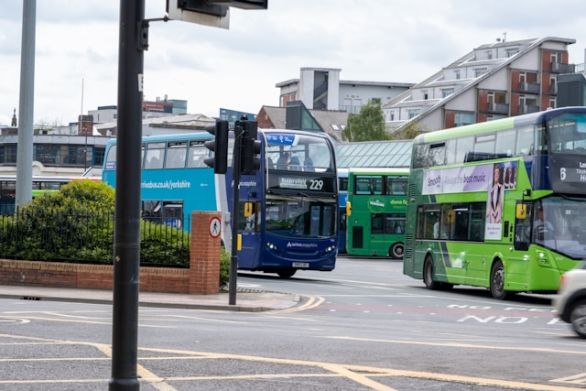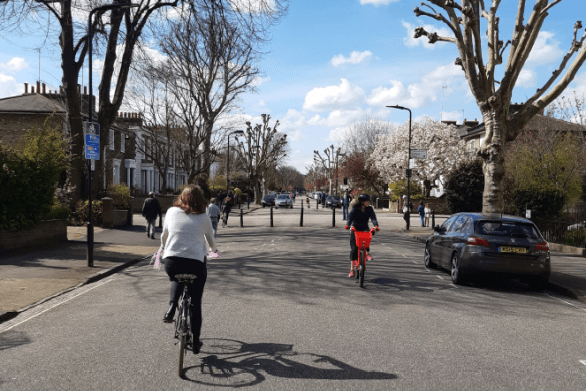We take a look at Bilbao’s EuskoTran (Basque Tram) and highlight features that may provide a new perspective for North American city planners.
The pace of economic recovery in the US is uppermost in the minds of government and decision-makers at the moment and, pre-Election Year, the views regarding appropriate solutions are polarizing. But economic stimulus issues frequently highlight the need for investment in transportation infrastructure. This is most often directed at the maintenance of existing facilities but there is also a wider debate to be had regarding the future investment in North America’s cities.
The Rail~Volution conference draws attention to the benefits of livable communities where the 20-minute neighborhood puts day-today facilities within easy range to walk, bike or take transit, offering real transportation choice and reducing reliance on the auto.
The streetcar is seen by many as a valuable component in creating this new city form, with many of the ingredients being a throwback to the early streetcar neighborhoods of the early 20th century. Modern equivalents have been short of funding, but where more extensive lines have been built the benefits have been clear, with Portland, Seattle, and others often quoted as best practice examples.
The US also has several extensive LRT systems, but by European standards they often feature more extensive infrastructure and longer trains. Sacramento, Denver, and Salt Lake City are good examples of this type of successful LRT. But returning to the need for economic recovery, and the case for investment in cityshaping transit infrastructure, may any other forms of transit be worthy of consideration?
The answer may lie in the smaller European transit systems. Driven by the European city form (no grid street layouts!), city planners have had to develop a new form of LRT to fit their city form. Often referred to as “tramways”, these systems also borrow from the example of early 20th century systems but with a modern approach relevant for the needs of the 21st century city dweller.
So what are the differences:
- Smaller vehicles, no more than 90 feet long, with multiple articulations allowing the vehicles to get around the narrower city streets.
- Low-floor vehicle designs allowing easy step-free access.
- Simple stops easily integrated into the urban streetscape.
- Simple “off vehicle” ticketing, and high quality passenger information.
- High quality wayfinding and walk/bike links to and from the LRT stops.
Many of these features are similar to modern US streetcars and the newer low floor LRT systems, but it is how the European systems are designed that offers some perspectives that could be applied in a North American setting.
Bilbao is situated in Northern Spain’s Basque region. With a population of around 350,000 it is the regional capital and has been an administrative and industrial hub for many years. But following industrial decline in the late 20th century, the city has transformed itself with a comprehensive city regeneration program, with the Frank Gehry-designed Guggenheim Museum being the most well-known feature.
The overall city development program has also included investment in new riverfront facilities, a conference center, and expanded facilities for the downtown University.
The “city shaping” has also included investment in a new tramway – the EuskoTran. The plan is to construct a “city-ring” and the first four-mile long line opened in 2004. It has 12 stops and is operated by eight vehicles offering a frequent service throughout the day.
The planning of the line is where there are lessons to be learned. In its simplest form this could be referred to as “join-the-dot -planning”. The emphasis is on close ties with land uses, both existing facilities and the new city-shaping attractors, with links to other transit modes (Bilbao has an extensive Metro, local commuter rail network, and intercity bus network) also included.
The EuskoTran’s 12 stops link the city’s main hospital, the Basurto regional bus station, new conference center, new shopping plaza, Athletic Bilbao’s 40,000 seat La Liga soccer stadium, the University; the Guggenheim Museum, the Abando old town district, and the Atxuri rail station.
There is also a major emphasis on high quality urban design. Putting transit in a high quality setting is an important consideration, which combined with the design features of EuskoTran provides a convenient, smart, and attractive way to get around Bilbao.

